How we test electronic drum sets
Everything you need to know about how the MusicRadar team tests e-kits for our reviews and buyer's guides - full methodology explained
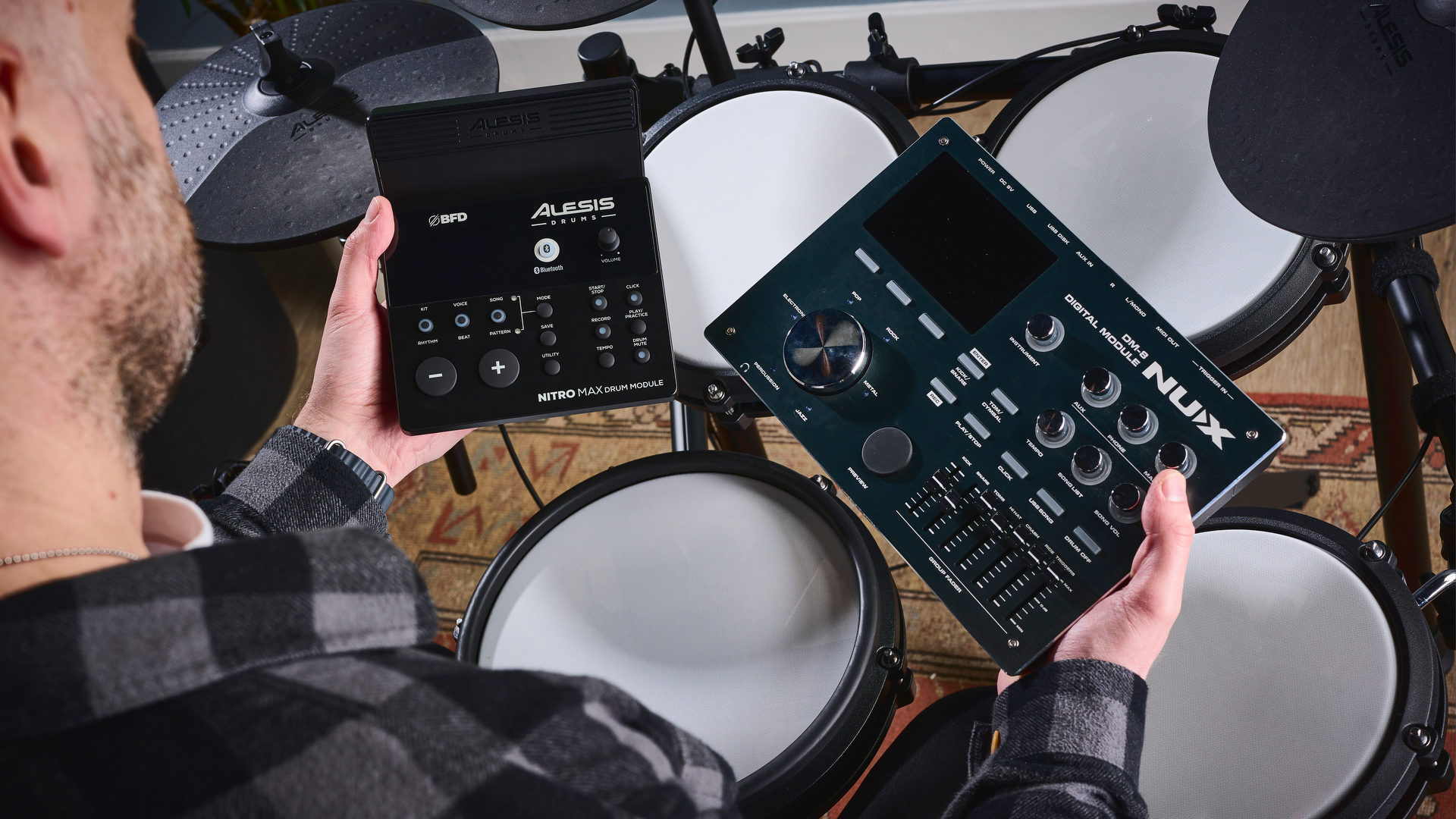
Electronic drum sets are the weapon of choice for many drummers - whether as a quiet home practice tool for established players who also play acoustic drums or, as is becoming increasingly common, a first kit for many beginners.
E-kits have become more advanced - and top-end features more affordable - over the years, and here at MusicRadar, our writing team has tested a huge variety and approaching hundreds of electronic drum sets since the site first launched in 2007. From beginner e-kits to the most technologically advanced on the market, these reviews act as a base for product selection in our buying guides.
We use a rigorous process when conducting our reviews, carefully testing each product to ensure an accurate overview for the consumer as well as a direct comparison with others in the market.
This page is to explain, in detail, our approach to testing e-drums. In a nutshell, these are the main areas we explore in our tests:
- Configuration & build quality: Here we assess the physical feel of the pads/cymbals and the response of the playing surfaces. Are the components - such as wing screws, cymbal arms, ball and socket joints, module mounts - of an adequate quality and designed to last? And, crucially, we assess the acoustic sound of the kit in the room - e-kits are supposed to promote ‘quiet practice’, but in reality how quiet is the acoustic sound of a stick or beater hitting a pad?
- Ease of use/setup: How easy is the kit to construct out of the box? Once built, how easily can the kit be adjusted to fit the setup needs of the average drummer? Is the module user-friendly? How easy is it to connect pads to the module? Is there an opportunity for expansion with more pads? Is there also USB/MIDI connectivity for recording?
- Sounds: What level of quality are the supplied sounds? We’re not necessarily looking at quantity here. A large number of sounds is often an attempt to cover up a lack of quality. We’re also looking at the variety of sounds on offer, and the level of editing functionality for those sounds.
- Other features: What additional features come complete with the kit or module and how well do they work? For example, many e-kits now feature Bluetooth connectivity, but how reliable is it and how easy is the connection process? Is it possible to add your own sounds to the module? If so, how easy is this process?
How we choose products
All of our recommendations are made purely based on the product’s merit - nobody tells us what to say in a review, or what we should or shouldn’t review. All of the content that goes into our tests is the expert view of the writer - we only work with experts who have experience in the field and will have used and reviewed many other products in that category. We never take money to produce a review, operating independently of manufacturers, and we’re never afraid to point out the flaws in a product.
We’re usually in direct contact with manufacturers or distributors who will send us a sample product for review. When selecting which products to cover, we rely on our own experience, discussions with other editorial staff, as well as experiences of others in our local music scene to determine which are the most popular or top-performing products that are worth reviewing.
We try to test every single product that we recommend personally, but of course, this isn’t always possible. You will find in most of our buying guides that we have tested a large portion of the products, which allows us to provide a useful recommendation in any instances where we haven't been able to get hands-on.
Get the MusicRadar Newsletter
Want all the hottest music and gear news, reviews, deals, features and more, direct to your inbox? Sign up here.
How we test
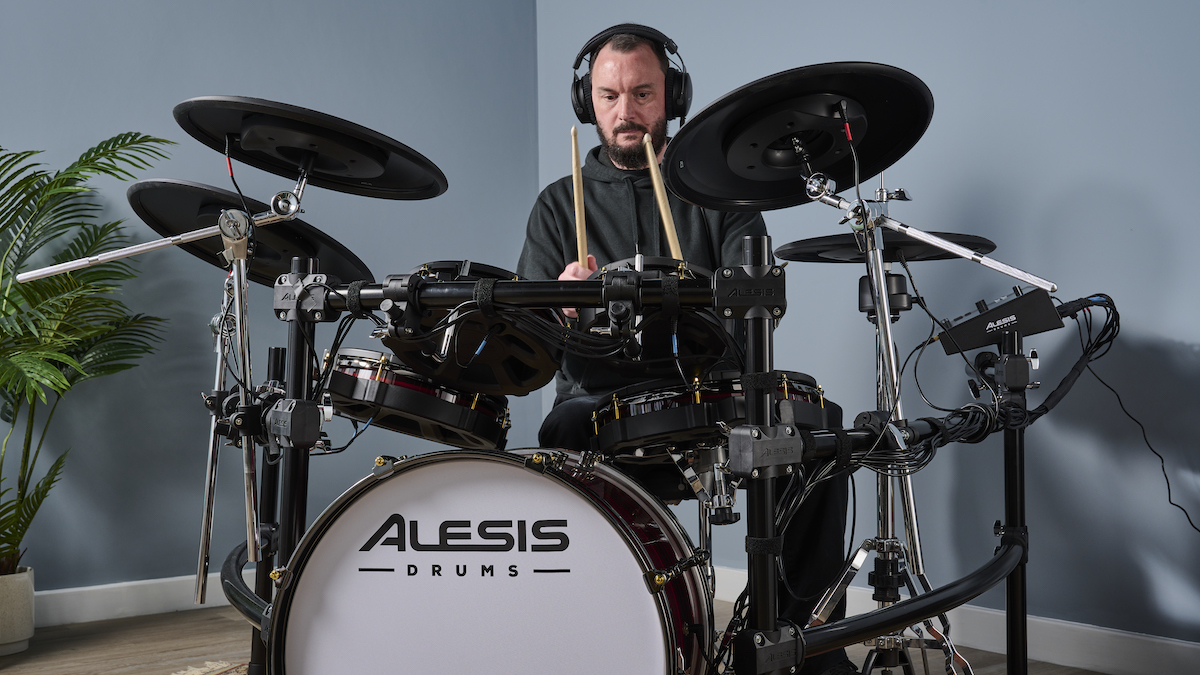
Here’s a detailed breakdown of our process when it comes to testing e-kits and the key questions we ask around each element of every kit we review.
Unboxing/setup
From the moment a kit arrives with us, we start our assessment, firstly focusing on the packaging. How well is it packaged and does it come in a single box or multiple boxes. Once inside the box/es, we determine if the rack comes built, partially built, or is it entirely stripped down to its component parts of tubes, clamps and feet. This determines the difficulty for the end user to put it together as well as the time it will take. Our reviewers always keep an eye on how long it takes from opening the box to sitting down to play.
Ironically, it’s more affordable for the manufacturer to pass on the do-it-yourself elements, yet the knowledge required to assemble for a beginner means that these savings could be applied to the least experienced end of the market. This is a subjective opinion as each kit is different, but we take our intuition and prior experience of assembling acoustic/electric kits into account when thinking about the target audience of the kit.
Are there instructions for building? Video guides to help? Printed instructions are often light on details and words and can be difficult to follow. We’ll comment on any difficulties or helping hands we experience.
Once assembled, how user-friendly are the fixings and adjustments? Some kits rely on drum key bolts for most adjustments, others use thumb bolts.
Then we assess whether everything can be positioned and adjusted easily, without other parts restricting the movements. Are the fixings consistently secure, or do they work loose over the duration of our testing? And what are they made of? Are they likely to stand up to years of tightening/loosening without cracking, stripping or shearing? Shards of soft metal or grinding, stiff fixings at this stage are a bad sign for longevity.
Cables
Snakes are the most common, and also the most frustrating in our opinion. When looking at cabling we explore whether cable lengths are cut to minimise surplus. Is there cable management (usually Velcro ties) included in the box and, crucially, does it do the job? The test for us is whether we can make the kit look neat for taking photos/videos for our reviews, while still being able to make adjustments to pad and cymbal placement.
On the subject of cables, do they feel strong enough to withstand snagging/treading/tangling? Moulded jacks are the most common connector in this type of system, and can only be fixed by being cut off and replaced. Likewise, if a cable in a loom breaks, it will need to be cut and a replacement soldered in place, or the entire loom will need replacing. So, it’s important we know they will last. We test for this.
Similarly, is the connection at the module-end sturdy? DB-25 connectors feature fairly fragile pins. Each of these supplies the signal from one of the cables in the loom - if it snaps off you’ll need a new loom at best, but if it breaks off inside the module terminal it could be difficult to retrieve.
Pedals and foot controllers
These are often the only parts of the kit that aren’t attached to the stand. Therefore, they move. Are they spiked? Attached to the floor or your rug with Velcro? Both? Is that something the user might need to know before they ruin their flooring? How well do they stay put? Are they susceptible to dust ingress? They live on the floor, after all and in the case of a hi-hat controller it could clog the switches over time. Then of course we assess the physical performance of supplied pedals. How do they feel and respond?
Pads and playability
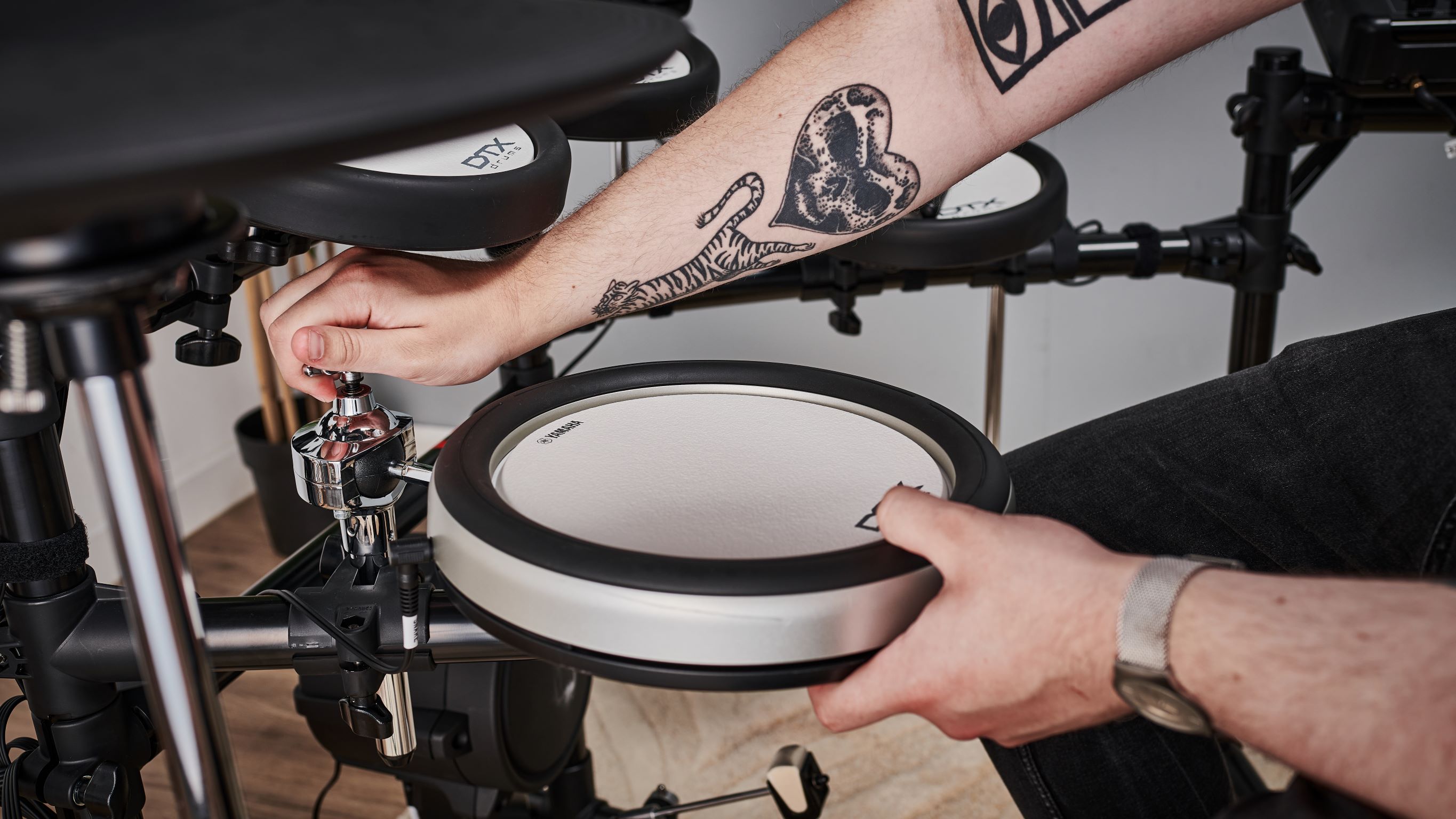
Although pads are a lot more standardised these days, there is still some variation, and our testers have experience with all types available on the market today:
Mesh heads
Are they multi-ply mesh, or a single layer? This has an impact on the feel and response of the pad. Are they tensionable? If so, does the dynamic response change as you change the tuning of the head? What colour are they, and are they likely to need cleaning regularly?
Rubber pads
Not all rubber pads are equal. Some feel harder and more plastic-y, others are padded and more forgiving on your hands (Yamaha, for example). Do they absorb vibrations, or send them back into the stick? How loud are they in the room? How do they compare in these ways to pads by other, potentially more established brands?
Rims
Do the pads have rims and, if so, are they playable zones? Sometimes manufacturers will place the limitation on the module, so a pad might be capable of two-zone playing, but the module isn’t. This could mean that someone could upgrade their module at a later date.
Are the rims the same material as the centre of the pads, or are they harder plastic? This will result in loud rimshots. Similarly on wood shell pads, are the rims metal? Are they covered with a ‘bumper’ to keep noise down?
Pad sizes
Do the sizes feel natural and in proportion to each other? Lower end kits will prioritise the snare, and sometimes bundle three identical pads for the toms. At the lower end, these can be quite small and not very realistic. Can you play the kit comfortably or is everything bunched up/too spread out due to pad sizes?
Cymbals
The sizing questions above also apply to cymbals, but the size can also have an impact on the movement of the cymbal pads. A 10” hi-hat that’s fixed in place is never going to feel as real as a 14”, two-piece hi-hat mounted on an acoustic stand. Does the ride swing a bit or does the mounting hardware even allow for this? Are the cymbals spinning, or are there anti-spin locks included?
Cymbal response
Hi-hats and choking are the main areas we think about here. Do the hats and controller (pedal or stand sensor) respond to your foot movement well while playing? Is there lag? Is the curve and transition between open/closed and in-between articulations smooth? Are there mis-triggers while keeping time? Can you perform fast barks mid pattern? Do the cymbals choke cleanly, or do they require a lot of pressure to choke the note?
Module
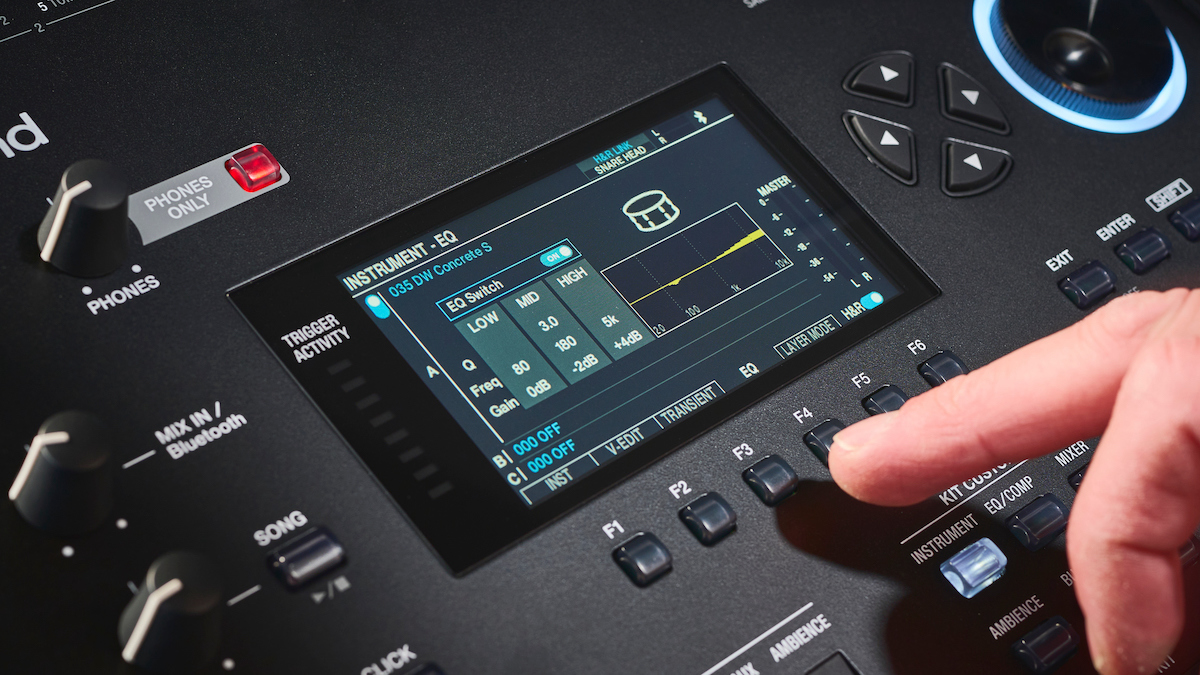
How intuitive is it to switch the module on and start using it? Many modules follow a similar format, but different brands have their own approach to navigation. We scroll through presets first before trying to change individual sounds within a kit, editing a bit and then moving to the wider functions of the module. If there’s Bluetooth, we’ll hook up a smartphone, play some familiar tunes and try out some of the kits in context.
Recording
Some modules have basic MIDI sequencers that will capture your drumming. Others record audio and can record incoming Bluetooth or aux signals as part of the recording - great for people who want to post covers online etc. We’ll take this functionality for a spin and report on ease of use and the quality of our recordings.
On-board songs
These can range from cheesy MIDI-generated backing tracks to audio recordings of real musicians. Are they worth your time? Are they trash? This should be determined by the target user - a beginner might be glad of some stuff to play with regardless of the quality (although with the ubiquity of aux/Bluetooth functionality it’s debatable whether these backing tracks are warranted at all).
Training/Coach modes
These can be brilliant, regardless of ability, but are often overlooked. Does it fit with the level of player the module is aimed at? Do they keep our engagement? Are they boring? If it’s a selling point of the kit (in some cases it is - such as kits aimed at beginners) then this is a very important area of focus for us.
USB/SD
If the module has USB, what is it for? Audio? MIDI? Both? Does it work well? Does it require additional drivers? Once connected, is it usable in terms of latency/dropouts/crashing? Likewise for an SD card slot; is this for loading kits and samples, recording performances? If the functionality is there we always try it - where do the kits come from, are they free? Is it easy to do? Can the module load a one-shot sample, is it worth doing?
Claims
The weighting of all of the testing areas listed here depends on context, which can be determined by the manufacturer’s claims. If the kit is “the quietest on the market” then we need to determine how accurate that is. Actual comparisons to other brands or series’ can help with this. If it’s the most affordable kit in its class, is it worth the saving, or should the reader invest a bit more for exponential gains in hardware, feel or sound?
Then of course, one of the biggest elements of any e-kit is whether the sounds in the module are good for the money, or genuinely good all round? There are levels, and drum sounds from a module need to be taken in context rather than compared to Superior Drummer (unless it’s a kit that contains multi-layered samples that look to compete with GBs of sample data).
Conversely, other kits might offer a low cost acoustic-style playing experience with fairly mediocre module sounds and features. Someone could view that kit as a ridiculously affordable (in context) controller for software, which places a different application on the kit than the manufacturer might have intended.
Key claims can be found within the bullet-pointed highlights of the manufacturer’s description of the kit, retailer websites or press releases and it’s the things they shout about the most that we test against.
Our reviews are carried out fairly, within the context of the market and with realistic expectations based on the price of the product.
Meet our experts
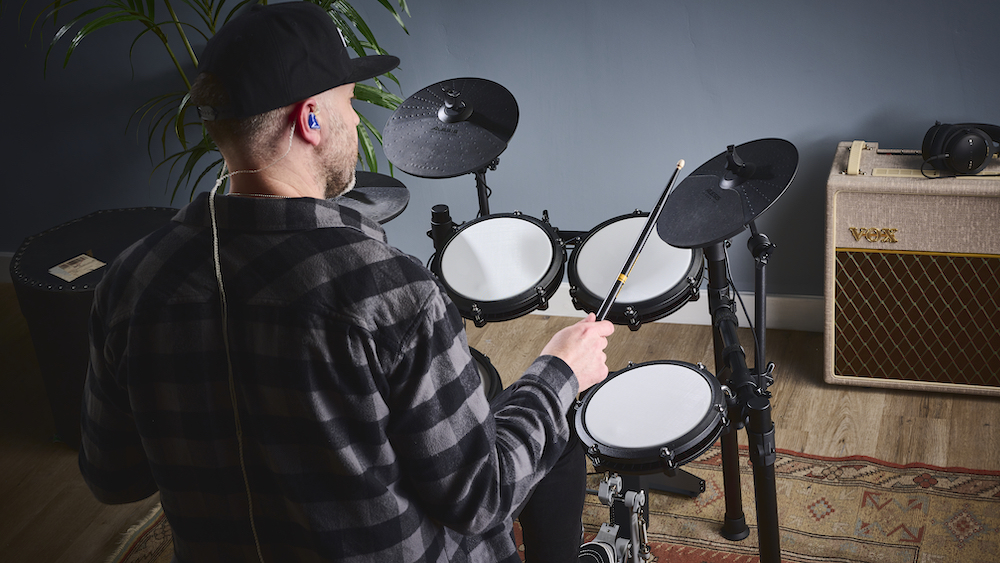
"I have been working in the drum industry since 2004, holding various roles within drum media, including Editor of the UK’s best-selling drum magazine, Rhythm, which I did for 7 years until 2016. Over the last two decades I have been tuned into the electronic drum market, covering key e-kit launches, attending trade shows (such as NAMM, the London Drum Show and the now defunct MusikMesse) and playing and testing countless kits from every brand. Since originally writing this best electronic drum sets buyer’s guide in 2018, it has been my job to keep this page up-to-date, accurate and helpful. With a young son at home, I currently have no gigs in the calendar, so I get my drumming fix behind an e-kit in my home workshop."
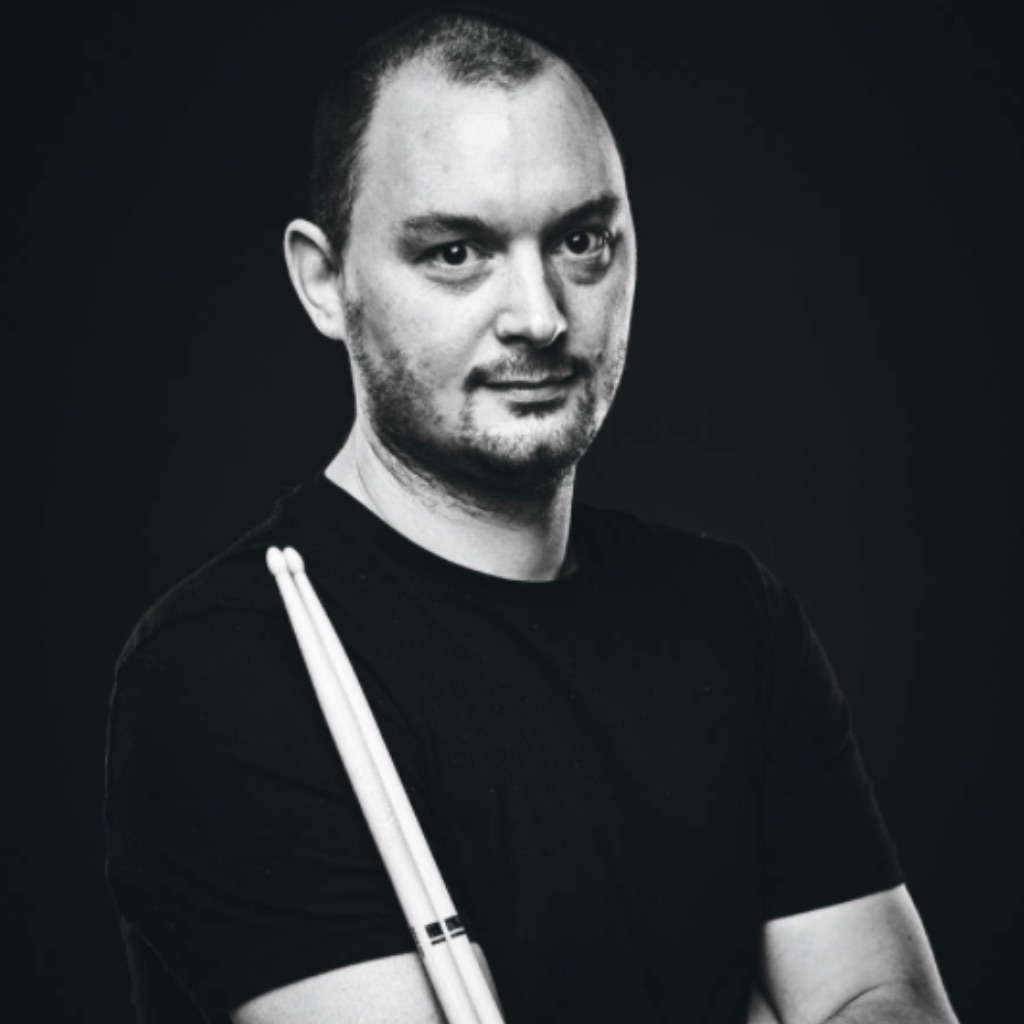
"I'm a freelance member of the MusicRadar team, specialising in drum news, interviews and reviews - I test the majority of electronic drum sets that come through the MusicRadar studio. You can also see me playing and chatting e-drums on the MusicRadar Tech YouTube channel. I formerly edited Rhythm and Total Guitar here in the UK, but drums is my primary instrument and I’ve been playing for more than 25 years (my arms are very tired). When I'm not working on the site, I can be found on my electronic kit at home, gigging and depping in function bands and working on the odd original project."

"I'm a professional drummer with a long history of performing live anywhere from local venues to 200,000 capacity festivals. I'm also a private drum tutor, in addition to teaching at the BIMM Institute in Birmingham. I'm a regular feature writer and reviewer for MusicRadar, with a particular passion for all things electronic and hybrid drumming. You can also see me pop up in a number of MusicRadar's e-kit demo videos. Prior to this, I was also the Gear Editor for Rhythm Magazine."
Hands-on demos
We deliver loads of quality written reviews, but we also have loads of great video content and hands on tests on our MusicRadar and MusicRadar Tech YouTube channels. Both feature interviews, gear-demos and video lessons. Where possible we aim to create video demos, or at least record audio examples of the kits we are reviewing.

I'm MusicRadar's eCommerce Editor. In addition to testing the latest music gear, with a particular focus on electronic drums, it's my job to manage the 300+ buyer's guides on MusicRadar and help musicians find the right gear for them at the best prices. I dabble with guitar, but my main instrument is the drums, which I have been playing for 24 years. I've been a part of the music gear industry for 20 years, including 7 years as Editor of the UK's best-selling drum magazine Rhythm, and 5 years as a freelance music writer, during which time I worked with the world's biggest instrument brands including Roland, Boss, Laney and Natal.
You must confirm your public display name before commenting
Please logout and then login again, you will then be prompted to enter your display name.
